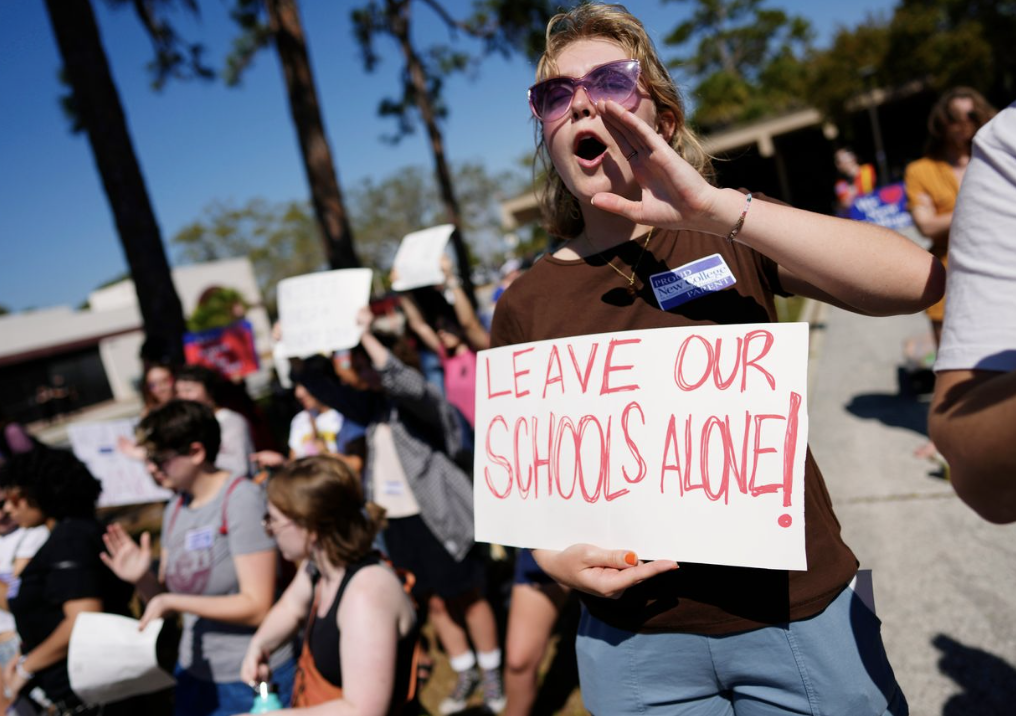By
American higher education is in crisis. The rise of diversity, equity and inclusion bureaucracies and a growing intolerance for dissent has spurred political battles for control of campus decision-making in North Carolina, Texas, Florida, and elsewhere. The fights point to a fundamental question: Who “owns” a university? Perhaps the question is better phrased: To whom does a school belong?
• The board. Most schools, public or private, are overseen by a legally constituted governing board.
• The politicians. At public institutions, state government usually is the legal “owner” of the school.
• The administrators. A school’s president and senior bureaucrats are vested with executive responsibility, which resembles ownership.
• The faculty. The professors who administer academic offerings and conduct grant-inducing research often feel the school belongs to them.
• The students. They are a primary reason for the school’s existence and their families pay substantial tuition and fees.
• The alumni. Graduates constitute the donor base at most private schools and some public ones as well.
• The accrediting agencies. The federal Education Department charges these bodies with certifying an institution’s right to confer degrees.
Some schools don’t fit this mold. Religious schools usually have a somewhat different governing dynamic than do government-owned community colleges, state universities or elite private schools. At some institutions, labor unions have an effect on decision-making. This diversity of ownership historically has been one of the strengths of American higher education. In the U.S., the academy isn’t run by a stultifying monopolistic government education ministry.
The University of North Carolina, Texas Tech University and other large state schools have been the scene of recent high-profile contretemps. Many such schools are dealing with the fallout from declining public support, high tuition fees and falling enrollments. From roughly 1960 to 2010, state politicians increased funding regularly and largely stayed out of internal university affairs. In that period, somewhat clueless governing boards rubber-stamped administrative requests, with the university president wining and dining board members and purchasing their loyalty with tickets to sporting events.
Students had relatively little clout during this period, and an overproduction of doctorates eroded the power and marketability of professors too. Simultaneously, the professoriate, always a liberal bastion, moved to the extreme left. In recent years college professors have openly and aggressively promoted ideologies such as critical race theory.
A decade of enrollment decline after 2011 reflected an accurate perception: Most colleges had become overpriced indoctrination mills. Recognition of this stimulated increasingly aggressive efforts by state politicians to reform universities, eroding their previous near independence from the political process.
In some parts of the country, elected officials have decided to reclaim ownership of their public university systems. Gov. Ron DeSantis’s popularity soared when he demanded that Florida schools account for their DEI spending. He managed to get special state funding for a new conservative-oriented Hamilton Center at the University of Florida, and he engineered a daring takeover of the small New College, calling on it to become the South’s answer to Hillsdale, a small liberal-arts school in Michigan that is famous for refusing money from the federal government.
Other states have joined the trend. The conservative North Carolina legislature engineered a GOP takeover of the UNC board of governors, who voted 12-0 to create a new school committed to free expression in higher education. A Texas state senator has introduced a bill to turn the free-market minded Civitas Institute at the University of Texas, Austin, into a formal college. The Free Market Institute—which “advances research and teaching related to the free enterprise system and the institutional environment necessary for it to function well”—flourishes at Texas Tech. In Ohio, legislators have vowed to cease rubber-stamping gubernatorial nominees to university governing boards. In the past, these nominees were often picked by university administrators.
Most state universities still depend on taxpayer funding to pay many of their bills. If those universities deviate too drastically from accepted norms of behavior, they can be punished with reduced subsidies, a loss of control, or both. Perhaps legislators will start moving to a new funding model: give state funds to customers (students) rather than to educational producers (universities) and then let education markets work. Ultimately, even militant faculty should realize that tenure isn’t worth much if there are no dollars to pay salaries—or students to listen to their lectures.
To see this article in its entirety and subscribe to others like it, choose to read more.
Source: Who Owns the University? – WSJ
 Listen Online
Listen Online Watch Online
Watch Online Find a Station in Your Area
Find a Station in Your Area










 Listen Now
Listen Now Watch Online
Watch Online
